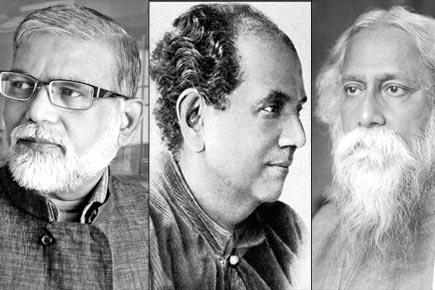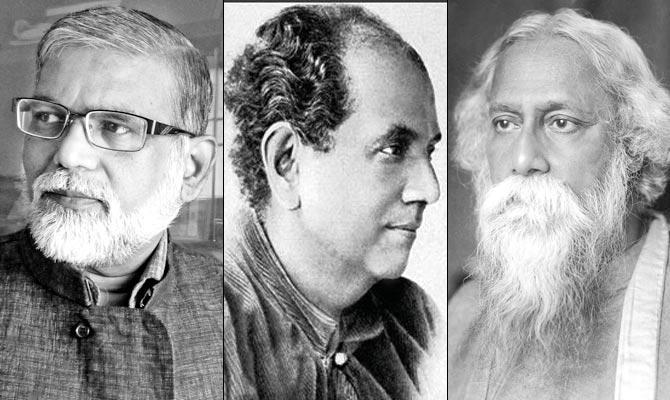A discussion will explore the creative relationship that Rabindranath Tagore shared with nephew Abanindranath


R Siva Kumar, Abanindranath Tagore and Rabindranath Tagore. Pic/Getty Images
Rabindranath and Abanindranath Tagore, two famous creative personalities from the Tagore household, had a great role to play in the artistic and literary scene of the country in the early 20th century.
ADVERTISEMENT
Abanindranath Tagore, poet laureate Rabindranath's nephew, who was at the forefront of the neo-Bengal movement that revisited Indian aesthetic ideals, stood out with his own identity and signature. An interesting creative dialogue existed between the two highly articulate individuals.
Art historian and teacher Siva Kumar, who is based in Shantiniketan, the university-town Tagore developed, will talk about this creative dialogue at Piramal Museum of Art today. Introducing us to his talk, Kumar says that the creative relationship between artists is something that goes beyond what we commonly call influence.
“It is a dialogue between two creative persons who are in close contact and respond to each other’s work or to a shared set of concerns. Abanindranath and Rabindranath were two such artists. They were members of the same family and active on the cultural scene of Bengal at the same time. Their encounters were not planned or self consciously set up but organic and prolonged,” he says.
Their personalities and sensibilities were different and yet we discover certain convergences in their responses to several factors; for instance, in their engagement with the past, in their views on the relationship between history and personal experience, and in the need both felt for the creation of freedom outside their dominant area of work.
Kumar points out that dialogue of this kind does not unfold only among young artists, and can occur among creative men of all ages. “Picasso and Matisse looked at and responded to each other’s work late into their lives,” he says. He also points at some other such glorious examples in the history of art.
“Take, for instance, the well-known example of Picasso and Braque during the Cubist years. There have been whole exhibitions and books devoted to exploring the creative dialogue between them. In India, such a conversation existed between Nandalal Bose, Benodebehari Mukherjee and Ramkinkar Baij in Shantiniketan, and among some members of the Progressive Artists Group in their early years,” Kumar explains.
He adds that sometimes, the dialogue can be between an artist and his predecessors. “Picasso definitely had such dialogues with Manet, Velazquez and Rembrandt. His works were not copies or instances of influences, but critical engagements with his predecessors’ ways of representing certain subjects, which not only affected his work but also reflected in our understanding of the older masters. Thus, it was mutually transformative. And I am sure, such instances can be found today,” he concludes.
On: October 19, 6pm to 7.30pm
At: Piramal Ballroom, Piramal Museum of Art, Peninsula Corporate Park, Lower Parel.
Email: piramalartfoundation@gmail.com
 Subscribe today by clicking the link and stay updated with the latest news!" Click here!
Subscribe today by clicking the link and stay updated with the latest news!" Click here!







